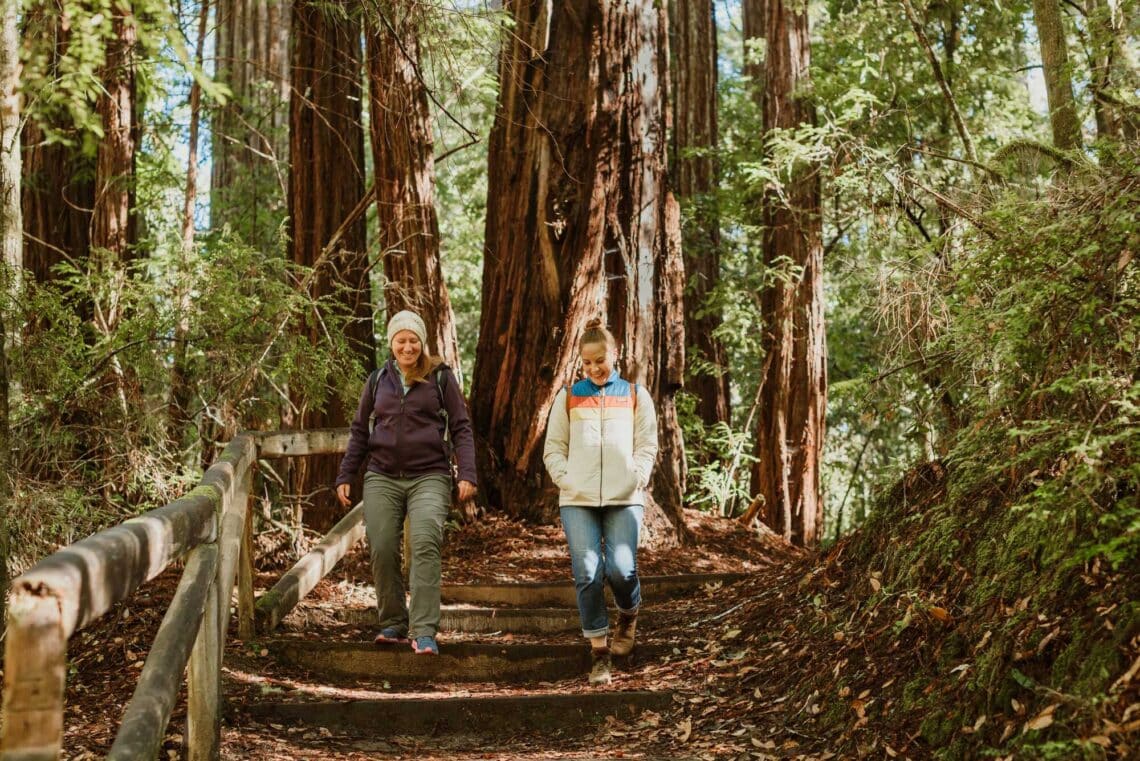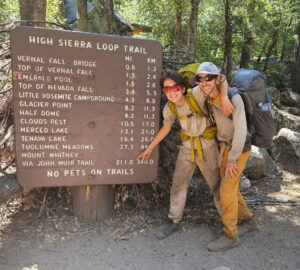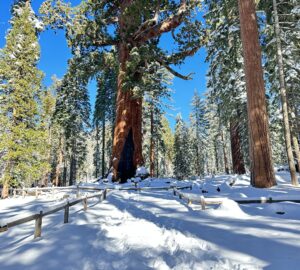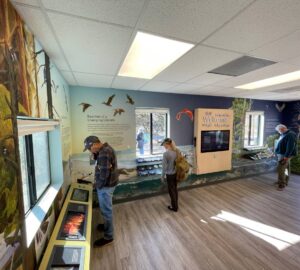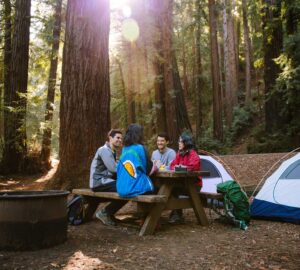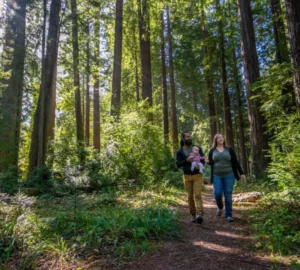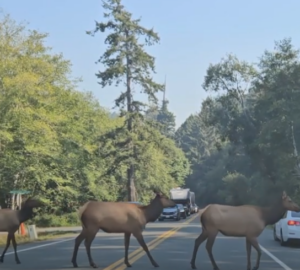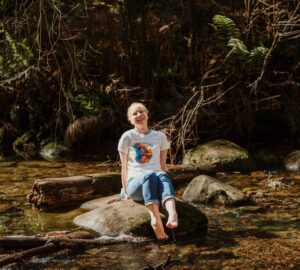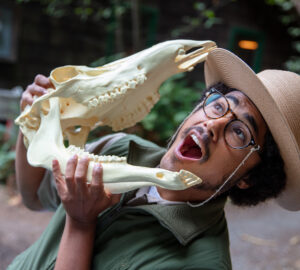Unzip from modern life with these timeless escapes to the big trees
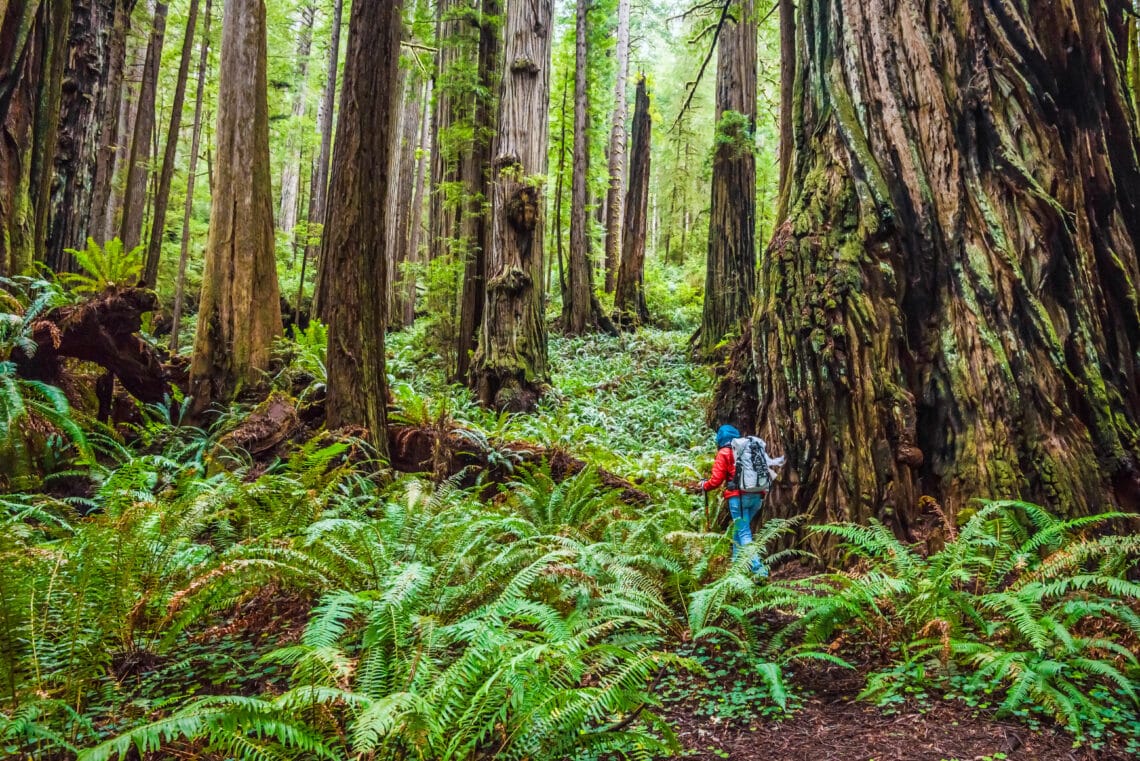
Sometimes modern life can feel like a daunting list of deadlines, debt, and difficult decisions. But all it takes to unzip from these everyday stresses is to walk deep into a redwood forest to live for a weekend, sustained by only what fits in your backpack. Beneath the redwood’s evergreen canopy, worries seem to fall away and the load on your shoulders lightens—no matter how heavy your pack.
Whether you’re a newbie or a pro, these backpacking destinations will allow you to unwind and experience the magic of the world’s most majestic trees.
Portola Redwoods State Park

CAMP: Slate Creek Trail Camp
LEVEL: Beginner
Tucked into the Santa Cruz Mountains, this forested canyon features 18 miles of trails, towering redwoods, and waterfalls tumbling over mossy rock walls. Quieter than Muir Woods and other redwood forests in the Bay Area, the 2,800-acre park offers a welcome respite from the always-on culture of nearby Silicon Valley.
Stay overnight at the Slate Creek Trail Camp, one of eight interconnected trail camps in the Santa Cruz Mountains. Surrounded by second-growth redwoods, this backcountry site is only 2.5 miles from the Old Tree Trailhead, making it a good destination for families and beginner backpackers.
Many experienced hikers also use this campsite as a launchpad for the strenuous-but-gratifying Peters Creek Loop. Those who brave the elevation gain (about 1,500 feet) and miles (6.2 round-trip) will be rewarded with the deep shade of Peters Creek Grove, a.k.a. “the Bay Area’s Lost World.” Nestled at the canyon’s base, this ancient coast redwood stand rises from a plush carpet of redwood sorrel, huckleberries, and pops of pink from the blooming Dudley’s lousewort. One of the old-growth giants stretches more than 300 feet into the sky and several of the redwoods clear 200 feet.
Reservations & Permits: Before you heft your pack and head out, be sure to check Slate Creek Trail Camp’s availability calendar and request a reservation.
Amenities: Slate Creek Trail Camp does not have potable water or fire rings (fires are not permitted). However, each site has a bear-proof food locker and picnic tables. The camp also has a seasonal pit toilet (May 1 to October 31).
Sinkyone Wilderness State Park
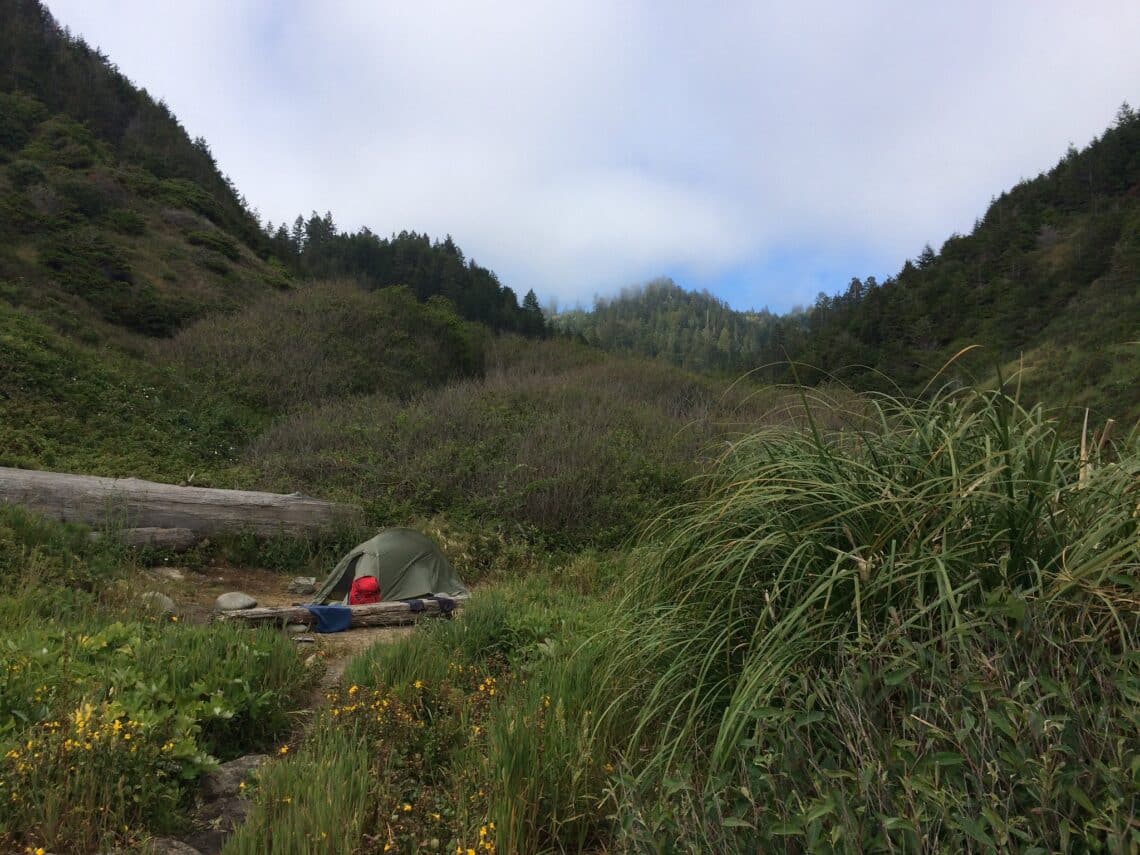
CAMP: 8 campsites on the Lost Coast Trail
LEVEL: Experienced
Named after the Sinkyone people who have lived in this region for millennia, this 7,300-acre park hugs the Lost Coast in Mendocino County, protecting one of California’s only undeveloped shorelines.
The 18.4-mile segment of the Lost Coast Trail that runs through the park is a challenging hike, gaining over 5,000 feet of elevation, but the route’s stunning ocean views and three old-growth redwood groves make it a worthy adventure. That said, this trail is not recommended for beginner backpackers.
The park’s rugged inclines and remote location leads to fewer visitors than other coastal areas. Along the length of this segment, you won’t find a road, building, or other example of human presence besides the trail and primitive campgrounds. You are often blissfully alone to enjoy the pristine bluffs, primeval trees, and natural beaches.
The eight campgrounds that dot the trail are scattered through a variety of landscapes. A few are on or near a beach and others are hidden away in the dense forest near burbling creeks. Each emphasizes a true wilderness experience with limited amenities, allowing you full immersion in the natural surroundings.
Reservations & Permits: Camping is first come, first served at eight camping sites along this segment of the Lost Coast Trail. Camping at Wheeler, Little Jackass, and Anders Trail Camps requires self-registration and a $5 fee (cash or check only). Parking is $6 at Needle Rock, the trail’s northern terminus.
Amenities: The campsites have no potable water; hikers must bring a water-filtration system. Trash must be packed out. Securing food and trash via a bear hang or bear canister is recommended.
Redwood National Park
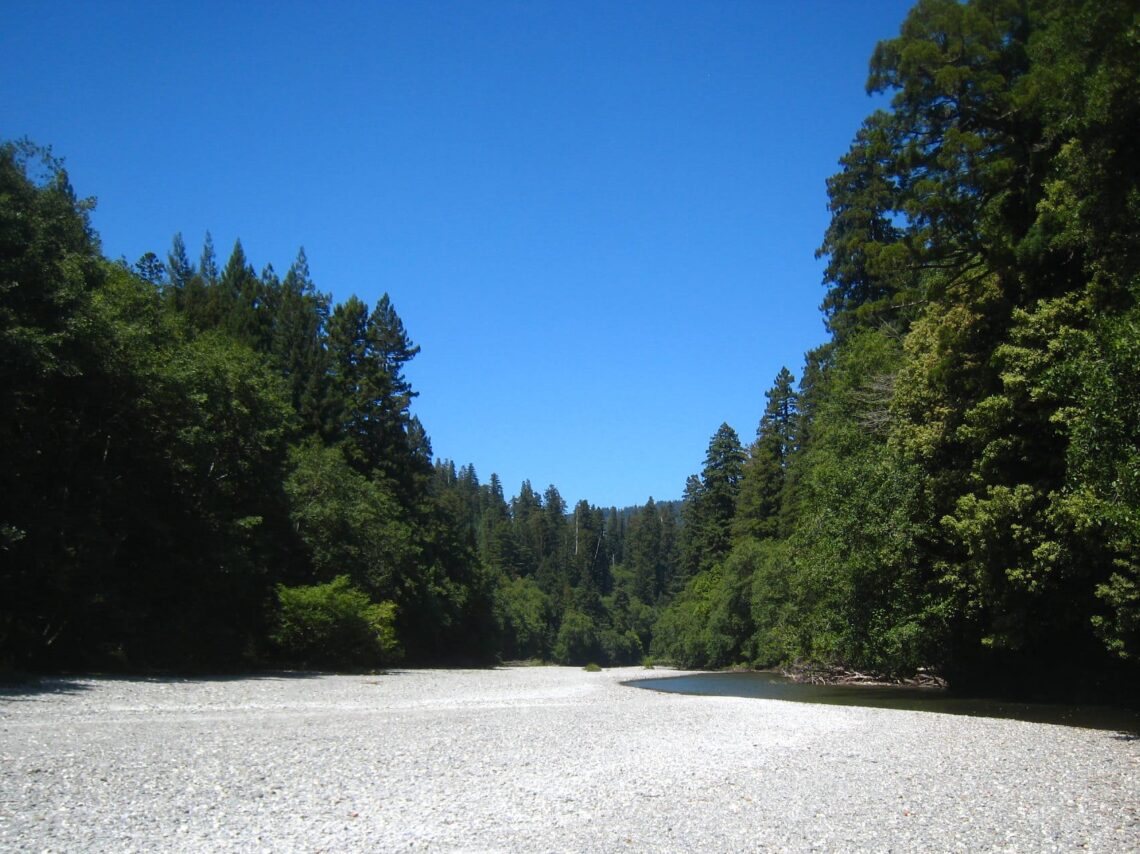
CAMP: Redwood Creek’s gravel bars
LEVEL: Experienced
Along California’s rugged northern coast, Redwood National Park spans over 71,000 acres of dense forests, sparkling rivers, and unspoiled coastline. In conjunction with three connected state parks, it protects approximately 45% of the world’s remaining old-growth coast redwood forests.
More experienced backpackers can take advantage of dispersed camping (camping outside of designated sites) along Redwood Creek’s gravel bars.
In this secluded section of the park, you’ll likely have little other company than croaking frogs and slow-moving banana slugs. Happy campers can bask in the sun after a refreshing dip in the creek and fall asleep with starry views framed by sky-scraping trees. But first you must get there.
Hiking to Tall Trees Grove
The trek begins at the Tall Trees Trailhead, about a 45-minute drive from the town of Orick along Bald Hills Road and then on the unpaved Tall Trees Access Road (permit required, see below).
From the trailhead, the moderately strenuous Tall Trees Trail (4.5 miles round-trip) descends 800 feet before continuing to a loop around one of the world’s most magnificent collections of redwoods: the Tall Trees Grove. Here you’ll find the Libbey Tree, once a record-holder for height, which helped spur the creation of Redwood National Park in the 1960s. Today, the grove and Redwood Creek’s floodplain are still home to several of the world’s 10 tallest trees. Even the 305-foot Statue of Liberty would have to crane her neck to see some of their tops.
You must hike at least .25 miles beyond the Tall Trees Grove before you can camp on one of Redwood Creek’s gravel bars. While this backpacking adventure is a fantastic option for those seeking solitude, be prepared for route-finding, stream crossings, and a steep hike back to your vehicle.
Reservations & Permits: Make a reservation for the Tall Trees Trailhead (one per vehicle) at least a day before your planned adventure. A backcountry permit is also required. Permits are only issued online and can be requested up to 180 days in advance.
Amenities: This is a true backcountry experience. You’ll need to bear-proof your food, filter drinking water, bury any human waste, and pack out all trash (including toilet paper).
Prairie Creek Redwoods State Park
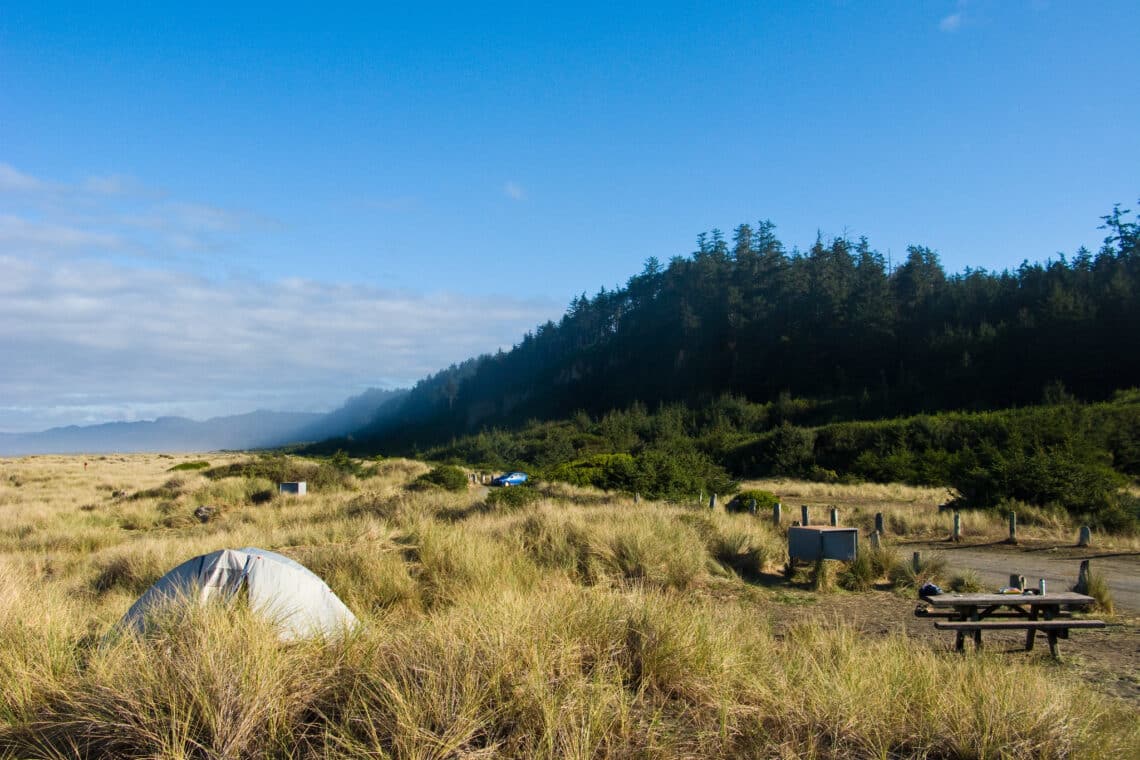
CAMP: Gold Bluffs Beach “Hike & Bike” site
LEVEL: Beginner
Just north of Redwoods National Park, this state park offers a more approachable backpacking experience at Gold Bluffs Beach Campground. Located next to a wild stretch of Pacific coastline, this developed campground also provides the comforts of flush toilets and hot showers.
While there are 25 sites for tent camping and small RVs (no trailers allowed), there is also one site reserved for hikers and bikers who don’t arrive in a motorized vehicle. You can set up right on the sand, with the tree-lined bluffs behind you and a view of the ocean just beyond. Then let the sound of the waves sing you to sleep.
Despite the campground’s easy access, you’re still likely to find delicious solitude on the adjacent beach and plenty of opportunities for wildlife sightings. Foxes and quail sometimes weave through the campsites, and imposing Roosevelt elk, North America’s largest elk species, often graze nearby. (Watch out for rutting bull elks during mating season, late August to early October.)
Two excellent routes for backpacking into the “Hike & Bike” campsite: the Miners’ Ridge Trail (4.5 miles) and James Irvine Trail (7 miles), both of which start at the Prairie Creek Visitor Center. Why hike instead of drive? As you trek between soaring trees, thick mosses, and enormous ferns, time warps, transporting you to a world before humans.
Reservations & Permits: Reserve a Gold Bluffs campsite online well in advance of your trip. A backcountry permit is also required for the Gold Bluffs hike-in site. Permits are only issued online and can be requested up to 180 days in advance.
If you plan to hike the park’s popular Fern Canyon Trail, be sure to secure a permit online at least one day in advance.
Amenities: The walk-in campsite has food storage lockers, trash cans, picnic tables, firepits, grill, potable water, toilets, and shower facilities.
Tips for a Stress-free Backpacking Trip
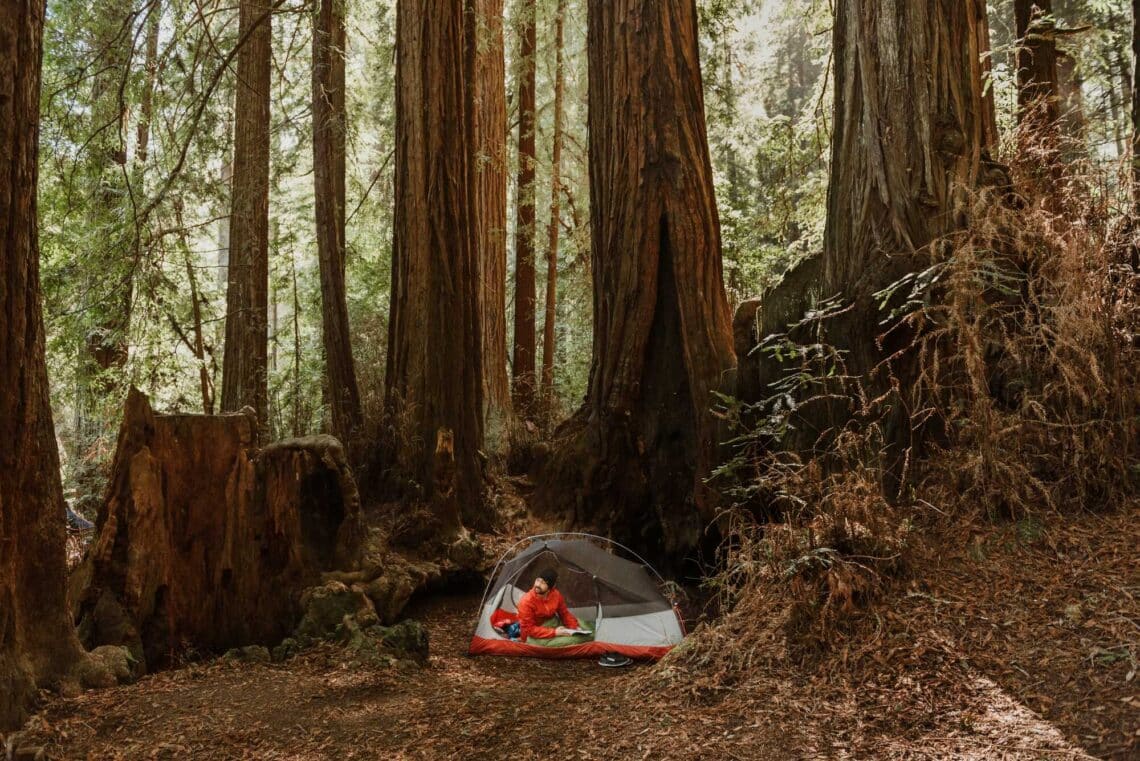
To prepare for a seamless backpacking experience, start with the seven Leave No Trace principles:
- Plan ahead.
- Travel and camp on durable surfaces, such as dirt or gravel.
- Pack out trash or throw it away in designated receptacles.
- Bury human waste at least 6 inches deep and at least 200 feet from water.
- Leave things as you found them.
- Minimize the impact of campfires by following all fire regulations and using designated fire rings.
- Respect wildlife.
- Respect other trail users.
Each hiking trail comes with its own unique environment and safety hazards, so research your destination ahead of time. Check weather and fire conditions on the National Park Service website. Bring layers and rain gear, as weather can change rapidly. Expect to have zero cell phone service. Download maps ahead of time and carry paper maps. Since communication is limited, share your trip plans with friends or family before you leave and consider carrying a GPS device. For more safety tips, visit the California State Parks website.
